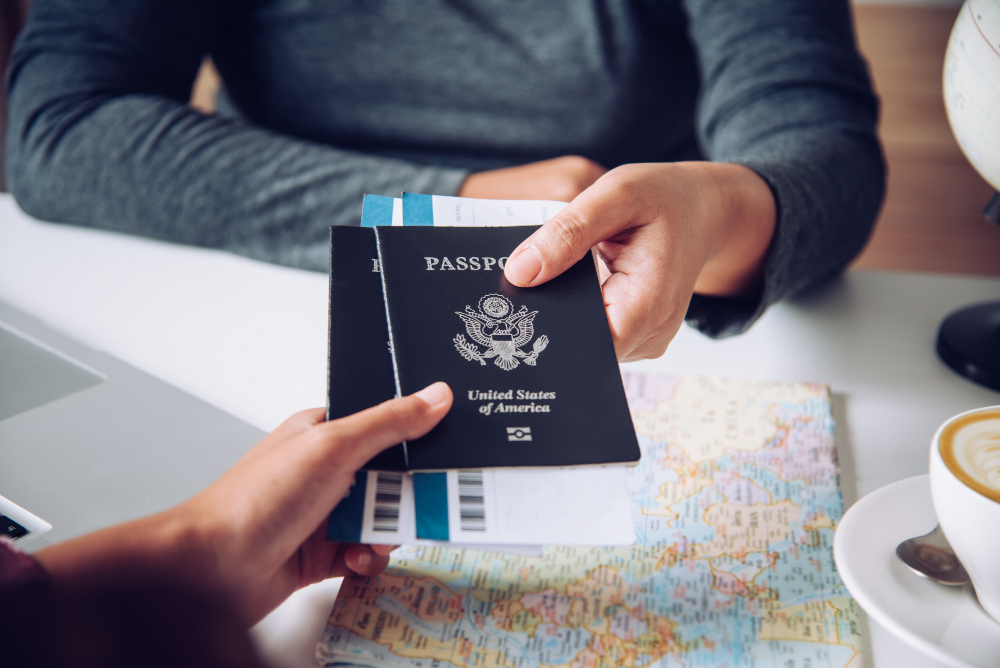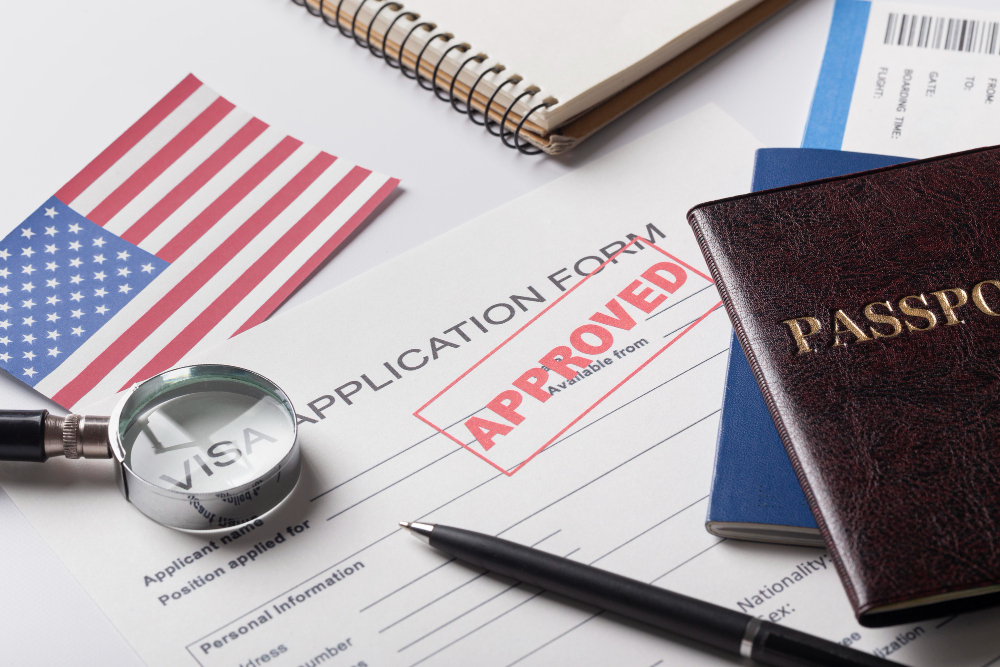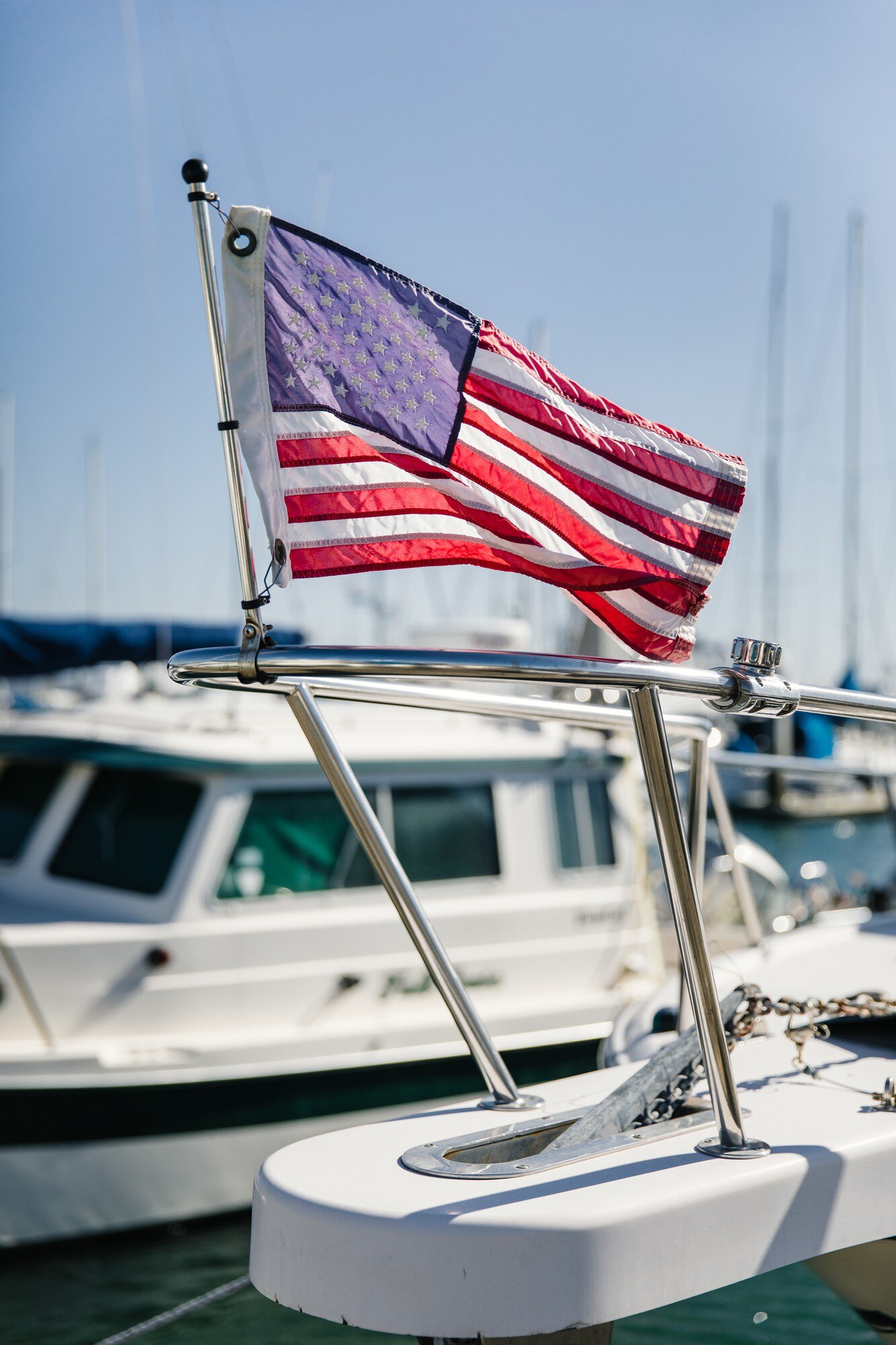Do you ever dream of escaping the hustle and bustle of daily life and going on a cruise? I can totally relate because I’ve had that dream once, and now, I’m living it!
Unfortunately, for those with DACA status, the dream might feel a tad more complex. Traveling, especially by cruise, brings about a lot of questions. The big question on deck today is: Can DACA recipients go on a cruise? We’re diving deep and answering some of your questions from regulations to required documentation.
What Does DACA Stand For?
Before we move further, let’s first understand what DACA is. DACA stands for “Deferred Action for Childhood Arrivals. It is a U.S. immigration policy that offers temporary relief from deportation. It targets eligible young individuals who were brought to the United States as children.
This policy enables them to live, work, and study in the U.S. without the immediate fear of deportation, acknowledging their integral role in American society.
Can I Cruise With DACA?
Cruising as a DACA recipient raises unique considerations. While domestic travel within the United States – such as by planes, buses, or boats – is generally allowed, international travel, including cruises, requires careful planning.
Specifically, stepping outside the U.S. borders without Advance Parole may lead to complications.
How Advance Parole Works
Advance parole is like the golden ticket for those with DACA status, allowing them to temporarily go outside U.S. borders and, more importantly, to return safely. But, like any golden ticket, it comes with its terms and conditions.
Humanitarian reasons are top of the list. We’re talking about situations like urgent medical care or visiting a seriously ill relative. Other reasons could range from educational endeavors to certain work-related tasks.
The request involves penning down your reasons, gathering supporting documents, and forwarding them to our ever-watchful guardians at USCIS (U.S. Citizenship and Immigration Services). And it’s not just USCIS keeping tabs; the Department of Homeland Security plays a role too, ensuring everything’s on the up and up.
Where Can I Go with DACA?
While on cruise ships many of us set sail without any worries. For those with DACA status, there’s a little more to consider than just picking the perfect sun hat.
Ever heard of closed-loop voyages? These cruises begin and end at the same U.S. port. Sounds simple, right? While they mostly are, any international detours mean the usual rules apply. Always have that Advance Parole ready if you’re venturing outside U.S. waters.
Starting with easy breezy destinations, like Hawaii. It’s a little slice of paradise that’s fortunately a part of the U.S., so for DACA recipients, it’s smooth sailing all the way to the islands. No extra documentation is needed! While you’re there, consider experiencing the enchantment of Maui with a dinner cruise, offering a unique perspective of the island’s stunning coastline paired with exquisite local cuisine. And while you’re at it, why not hop over to Alaska too? Majestic glaciers, fascinating wildlife, and the mesmerizing Northern Lights await, all within the comfort of U.S. borders. An Alaska cruise itinerary often includes breathtaking stops like Glacier Bay and Juneau, ensuring an unforgettable adventure in the Last Frontier.
Now, places like the Bahamas and the broader Caribbean might sound tempting, and for a good reason! Who wouldn’t want to dip their toes in those crystal-clear waters? But here’s the kicker: these places aren’t U.S. territories. However, the price of a Bahamas cruise can be quite reasonable, often offering packages that provide excellent value for money, making this tropical getaway accessible to a wide range of travelers.
Speaking of sandy beaches, Mexico is another hotspot on many cruise itineraries. Just like with the Bahamas and the Caribbean, it’s essential to be on top of your paperwork game. Those pristine beaches and mouth-watering tacos are just a few documents away. When planning your cruise, consider that the best time to go to Mexico is typically during the dry season, from November to April, when the weather is more temperate and conducive to exploring coastal towns and beaches.
Now, the thing about cruises is that they have these detailed itineraries, mapping out every pit stop of your journey. And for DACA holders, this isn’t just a list of fun destinations, it’s a roadmap for preparation. Some ports might welcome you with open arms, while others might need a little more paperwork shuffle. Knowledge is power, and in this case, the key to a stress-free vacation.
Does My DACA Card Work as an I.D.?
The DACA card, also known as the Employment Authorization Document (EAD), is a pretty nifty thing to have in your wallet. It’s a valid I.D. in many situations within the U.S.
When boarding domestic flights or verifying your identity in several states, flashing your DACA card can work wonders. But here’s the catch: if your card has expired, you might need to pull out an alternative form of I.D. Always keep tabs on that expiration date!
Moreover, while some states are hopping on the bandwagon to accept DACA cards for REAL ID applications, it’s always good to double-check local regulations. The takeaway? Your DACA card is more than just a symbol; it’s a functional, accepted, piece of identification.
Your birth certificate is more than just a piece of paper detailing your debut in the world. For DACA recipients, it can play a crucial role in several processes, like verifying your identity or applying for certain benefits. Additionally, when preparing for a cruise, your packing list should include essential items such as your travel documents to ensure a smooth and enjoyable journey.
Will I Need a Passport for DACA?
For DACA recipients, having a passport from their country of birth is crucial, especially when considering international escapades. Your DACA status might grant you certain protections and opportunities in the U.S., but outside its borders, that valid, unexpired passport becomes your primary I.D. Now, let’s talk travel. Heading on a cruise or flying to another country?
Even with an Advance Parole document, your passport is your go-to. Recall, the Advance Parole lets you return to the U.S., but your passport ensures things go without a hitch. So, while the passport isn’t strictly for DACA, it’s a vital companion.
DACA and Long-Term Residency: Understanding Your Rights
What about long-term aspirations like permanent residency or even citizenship? Let’s dig a little deeper and shed some light on these burning questions.
Do DACA Recipients Get Green Cards?
Well, the straightforward answer is that there isn’t a direct path from DACA to a green card. However, that doesn’t mean all roads are closed. Under certain conditions, such as entering the U.S. with a valid visa or leveraging Advance Parole, some DACA recipients can inch closer to green card status.
Can a DACA Recipient Marry a US Citizen?
Love knows no bounds, right? If you’re a DACA recipient who’s fallen head over heels for a U.S. citizen, there’s good news. Yes, you can get married! And while tying the knot doesn’t automatically grant you a green card, it does open up a potential path to one.
However, be prepared for a thorough review; the authorities will be ensuring the marriage is genuine and not just a bid for immigration benefits. After all, love should be about the heart, not the paperwork!
Can DACA Recipients Get Citizenship?
Achieving U.S. citizenship is difficult for many DACA recipients. While DACA doesn’t offer a direct route to citizenship, it can be a stepping stone. The journey typically involves first securing a green card. And once you’ve held onto that green card status for a few years, the summit is in sight: you can apply for naturalization and become an official U.S. citizen! It’s a challenging journey, but oh, the view from the top is worth every step.
Legal Considerations and Risks for DACA Recipients on Cruises
Before you set sail on the vast ocean and dive into the thrill of a cruise, it’s crucial to navigate the more turbulent waters of legal considerations. Let’s anchor down some important points.
Venturing outside the U.S. could jeopardize your DACA status if not done cautiously. If you don’t re-enter the U.S. under the correct procedures or without the appropriate approvals, you might find yourself in a tricky situation.
Traveling without advance parole requests is like jumping into the ocean without a life jacket; it’s risky and can lead to a loss of DACA protections.
FAQs
Can DACA recipients go on cruises?
Yes, DACA recipients can venture on cruises, primarily within the U.S. like closed-loop voyages. However, international travel comes with risks. Leaving the U.S. without the appropriate approvals, such as Advance Parole, could jeopardize the DACA status. Before setting sail, it’s essential to be well-informed about the itinerary and ensure any required permissions are in place to safeguard one’s status.
Can I go on a Caribbean cruise with DACA?
DACA recipients dreaming of Caribbean escapades should tread with caution. Caribbean cruises typically involve stops at international ports, meaning you’d be leaving U.S. territory. Without an approved Advance Parole, re-entry to the U.S. could pose challenges, potentially risking DACA status. Before booking that sun-soaked Caribbean journey, consult with immigration experts and ensure all ducks—or should we say, seagulls—are in a row.
Can DACA go on a cruise to Puerto Rico?
Absolutely! Puerto Rico is a U.S. territory, making it a safer bet for DACA recipients. As of late 2021, USCIS even approved travel to Puerto Rico and other U.S. territories without the need for Advance Parole. Still, having your identification in order, such as your DACA card or valid passport, ensures a smoother journey from the mainland to Puerto Rico’s enchanting shores.









